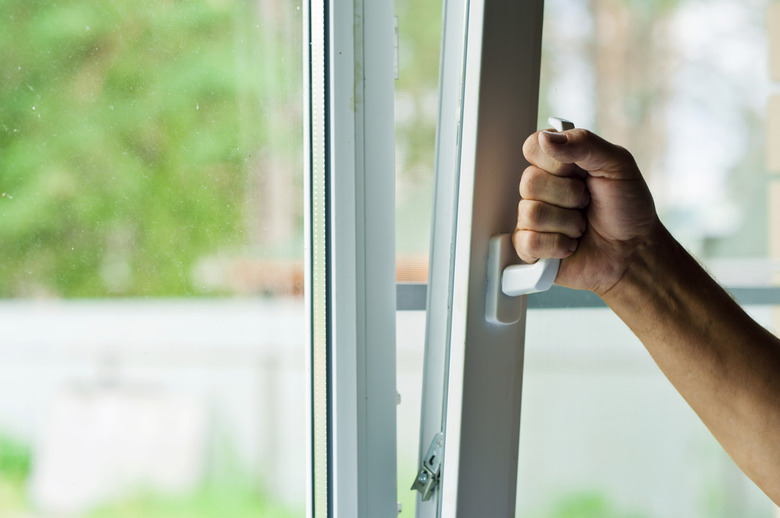What Kind Of Cleaning Needs To Be Done After Bombing For Pest Control?
We may receive a commission on purchases made from links.
You want to get pests out of the house without harming yourself, but pesticides can be toxic. Bombs release pesticide sprays into the air for several minutes in aerosol form, which then end up on floors, counters, and other surfaces throughout the treated area. Proper preparation before bombing limits pesticide residue cleanup afterward.
Tip
When you reenter your home after bug bombing or fogging, first open the windows and run fans to maximize ventilation. Then concentrate on thoroughly cleaning food prep and eating surfaces, wiping down other exposed surfaces, and vacuuming or sweeping areas where you find dead insects.
Prepare Your Home for Fogging
Prepare Your Home for Fogging
You don't necessarily need to do a ton of cleanup after using a bomb, or fogger, as they're also called. The pesticide residue in insect foggers loses most of its potency once the sprays dry. The first step in ensuring a clean house after using a bomb is to read the bomb's package instructions. Those provide crucial information on covering surfaces where food is prepared and eaten, covering fish tanks, and removing plants and pet bowls before bombing begins.
Food items should be put in cupboards or refrigerators and toys stored away or removed from the house. If a member of your household has a respiratory condition and you're worried about a bedspread, for example, put it in a sealed plastic bag or large plastic container with a tight-fitting lid. Don't use more bombs than necessary. You need no more than 1 ounce of product for every 1,000 cubic feet of living space.
Clear the Air After Fogging
Clear the Air After Fogging
Leave your house after the bomb is activated for the time its instructions recommend, which is typically between two to four hours. Upon your return, open the windows to clear the air. Set some small electric oscillating fans in each room to encourage air circulation, which assists with ventilation. Staying in the house to clean without ventilating it can make you and your family sick, particularly anyone with a respiratory illness. When you have ventilated the rooms and there are no areas still wet from pesticide, uncover the covered surfaces.
Focus on Eating Surfaces
Focus on Eating Surfaces
The bomb's instructions will tell you what to focus on cleaning afterward. Typically, you should at least clean food preparation and eating surfaces with warm, soapy water. You can use soap and water at the strength you normally use for household cleaning chores, such as 4 tablespoons of liquid dishwashing soap per gallon of water. Wipe down other exposed surfaces, but particularly floors and other surfaces children and pets tend to come into contact with.
Cleaning inside drawers and closets isn't necessary, because insect foggers can't penetrate into those spaces. You'll want to vacuum carpets and sweep floors and other areas where you find dead insects.
Prevent Future Infestations
Prevent Future Infestations
To avoid using chemicals to kill pests, it's best to prevent them from gaining access to your home in the first place. Inspect your home indoors and out, looking for pests and their possible entry points, such as torn screens or missing cement. Then fix all of these, even the smallest holes, with the proper material, such as mesh, cement, or caulking.
Remove or repair sources of water, including leaky hoses and faucets. And always wipe up and sweep away food crumbs and other household debris that attracts pests. It's best to keep the relative humidity in homes under 60 percent, with dehumidifiers, ventilation, or air conditioning.
